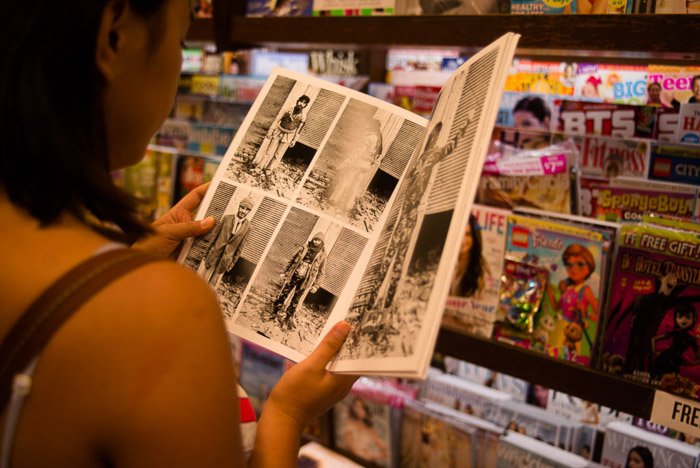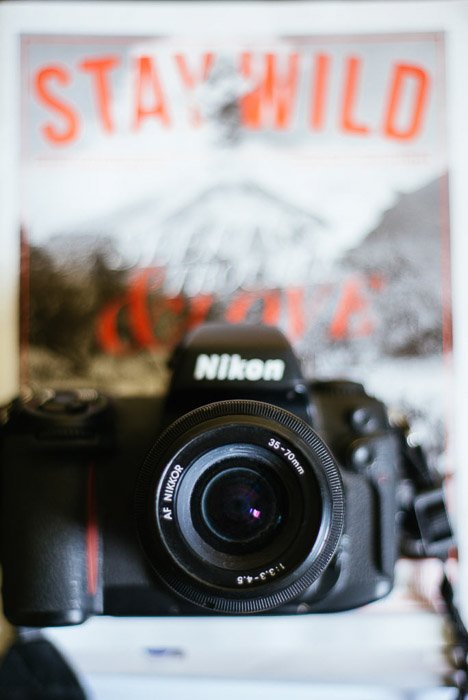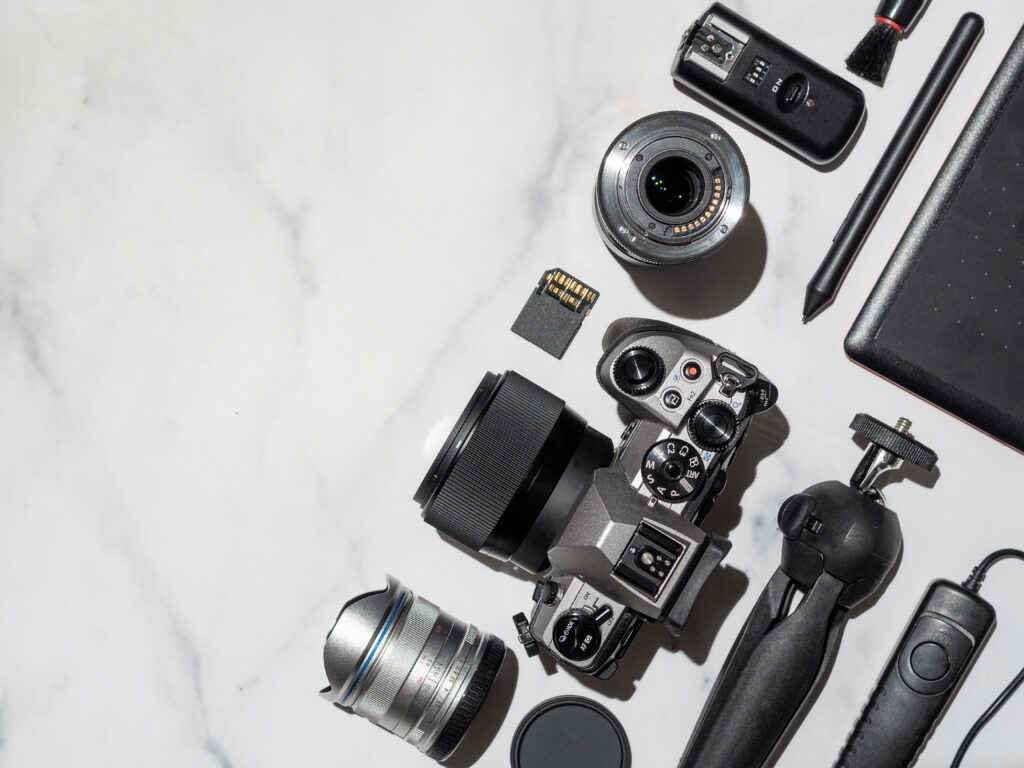There’s really nothing like seeing your name and images printed in a magazine for the first time.
Do you think you’re ready to make the leap and become a magazine photographer?
Here are 12 tips to help you get there.
1. Become A Magazine Photographer: Choose a Speciality to Stand Out More
Some people tend to think that publications love portfolios with different types of images. That’s not true at all.
Editors like consistency. Focus on what you’re good at, and stick with that.
Don’t worry about not landing gigs if you like landscape or food photography. There are a lot of freelance and professional photographers out there, but better to be the best in your field than average in a niche.
Niche photographers are harder to come by. Pursue less popular genres. You’ll have a better chance of getting hired for magazine photographer jobs.
Try out still life, or astrophotography, or even macro photography.
But don’t discard popular genres altogether. The important thing is that your work stands out, regardless of the field you’ve chosen.
2. Ask Your Friends to Pose for Practice Shoots
Ask your friends to be your “models.” Even though you’re doing it for “fun” at this point, you should still treat it seriously.
Remember that you need to use the pictures you took of your mates for your portfolio. So make it look professional even when you’re just playing around.
Ultimately, you need to be comfortable around your camera no matter the situation. This will help.
Learn how to manipulate aperture, shutter speed, and ISO. Make sure you know how to focus correctly as well as how to use manual settings.
3. What Equipment Should You Buy
You don’t need professional equipment when you’re still starting. That doesn’t mean that you can get away with using your phone or a compact camera, either.
The best choices are DSLRs or mirrorless cameras. These let you change lenses and use Manual Mode. It’s okay if you buy the entry-level option.
It may be cheap, but believe it or not, it has all you need to produce work that’s magazine-worthy.
For lenses, you’ll need at least one f/1.8 or f1/4 prime lens (either 35mm or 50mm) on top of your kit lens.
These are especially useful for portraits that need significant background blur. They’re also great for shooting fast movement.
Once you earn more money doing commercial photography, you can upgrade your equipment.
Having said that, don’t obsess over buying gear even if you have the money. What matters is how you use whatever you already have.
4. How to Build a Portfolio

The next step is creating a decent portfolio. It doesn’t matter if you haven’t done any real photo shoots yet. You still have to make everything look professional.
Select a few images that you consider are the best. If you have any doubt about any particular picture, don’t include it– even if you can’t explain why it seems off.
Try to include at least 10 photographs for your first portfolio. That’s more or less the right amount of pictures to help editors gauge if you’re a good fit for the publication or not.
Just make sure everything looks coherent. If you plan to do an editorial photography portfolio, stick to editorial images and nothing else.
Say you have non-editorial photos that you think the publication would also be interested in. Put them in a separate category.
Organize everything so the editor doesn’t get a headache navigating your website.
They’ll be much more likely to stay on your website.
5. Use Instagram to Increase Your Potential Reach
Consider social media as an extension of your portfolio. Anyone who decides to look you up online is bound to find your Instagram sooner or later.
You might as well make sure that the photos you post on your feed are topnotch as well.
Photographers get discovered on Instagram all the time. So you should use the platform to promote your work as well.
The amount of followers doesn’t matter that much. Especially now that people are reluctant to follow you even if you’re really good.
What’s important is the number of impressions you get from each photo you upload. If you get a lot of likes on your posts all the time, that means you can engage people through your photography.
You should also integrate hashtags of your favourite magazines where appropriate. If they like your work, they might end up reposting some of your tagged photos.
Later on, you can mention your interactions with them when you decide to apply for a job.

6. Read Magazines to Figure Out What Styles They’re After
If you want to sell photos to magazines, read a few that interest you. It may seem strange to buy physical copies of publications these days. But they offer a plethora of information you’ll find helpful.
Browsing through the pages of a magazine allows you to get a sense of its style. Study the photographs and list down the patterns you see.
Do you find more documentary-style photos or fashion-related work? How do they use images to tell stories? Can you relate to their aesthetics?
Try to incorporate what you like in those photos into your own work. Of course, the goal is not to copy exactly what you see, but to help build your personal style.
Ultimately, you don’t want your pictures to look like they’ve been torn out of a Vogue magazine. Just about everyone wants to achieve that look. Make your work unique and it’ll stand out.
7. Check the Masthead for Submission Guidelines
You’ll find this in the first few pages of the magazine. Masthead is the other term for the editorial page of the publication.
It provides the names of the editors, writers, photographers, and their contact information.
It also lists their submission guidelines.
Not every magazine accepts submissions. But if they do, the masthead is where you’ll find information about it.
Submission guidelines give you the chance to appear in the magazine. Each publication has a different set of guidelines. So follow the directions carefully when submitting photos to magazines.
You don’t want to blow your chances just because you failed to rename or resize your files the way they wanted you to.
8. Contact Editors to Get Noticed

If you don’t see the submission section, that doesn’t mean you should give up. You can correspond with the publication via email, instead.
You can also use websites such as Workbook. These provide access to a directory of various publications.
Once you have an email address, feel free to write the publication a short message. Introduce yourself and share your portfolio. You can also tell them what services you can offer for them.
In most situations, you’ll want to send your email to a photo editor or a creative director. They’re the ones who handle photographers.
Don’t be surprised if most won’t answer back. They get letters from other photographers like you all the time.
You might only get one response or two. But you’re already a step closer to becoming a real professional photographer.
9. Start Locally
If you want to jumpstart your commercial photography career, look for local publications. They’re more accessible than well-known companies.
Local publications will pay you less or even have you work for free. But this type of work means experience and exposure.
Working locally also gives you the chance to collaborate or interact with magazine photographers. Talk to them and ask for advice.
You’d be surprised how willing they are to help you out with photography.

10. Being Prepared Will Help You Work Under Pressure Better
Your first professional photo shoot is going to be the most nervewracking. When a publication takes a chance on you, you’ll need to create quality work no matter what happens.
On your first professional photo shoot, you’ll realize that things may not always go according to plan. The shots you expected to be awesome may end up looking terrible.
That’s why knowing the ins and outs of your camera is essential. You have to know how to capture any subject in any situation using the right settings on the spot.
To avoid any issues you may face on the field, make sure you’re prepared for the shoot.
Bring two of everything, especially batteries and SD cards. Also, throw in a black gaffer tape in your bag. If you’re wondering what you need it for, wait for something to break, and you’ll understand why.
Eventually, when you’re confronted with problems in the future, you’ll know exactly how to solve them.
11. Always Follow the Assignment Guidelines
Some photographers make the mistake of going against what their editor tells them. They think that their vision is better than other people’s, so they ignore their opinions.
The truth is, doing that only risks their chances of achieving what they want.
Once you start working for a publication, always keep in mind that your editors know best.
They have significantly more experience than you. Follow what they tell you–even if you don’t exactly agree with them.
Take notes all the time and avoid the mistakes that your editors warn you about.
If an editor tells you that he doesn’t like how you shot a particular image, ask them why. List down what they want to see in your work and make sure you include them into your next set of images.
Most of all, don’t make the same mistakes they already pointed out.
Knowing how to accommodate your editor’s needs gives them a reason to work with you more in the future.
Make them feel that you’re easy to work with, and you’ll increase your chances of getting even more gigs.
12. Don’t Be Afraid to Show Your Own Style

Although you should always do what your editor tells you, you shouldn’t be afraid to experiment as well.If your editor tells you to capture a subject using a specific manner, you can create extra pictures in your own style.
As long as you make sure you’ve satisfied what your superior wants, it won’t hurt to include a few photos of your own.
Editors love a magazine photographer who has a vision. It’s okay to take the initiative every once in a while and show them what you’re capable of.
Conclusion
Your success in commercial photography will depend on how different your images are.
There are a lot of photographers that can shoot fashion. But only a few of them are truly unique.
Keep working at your craft and strive to be excellent… and one-of-a-kind.
Looking for more great photography business tips? Check our post about Photography Internships next!

